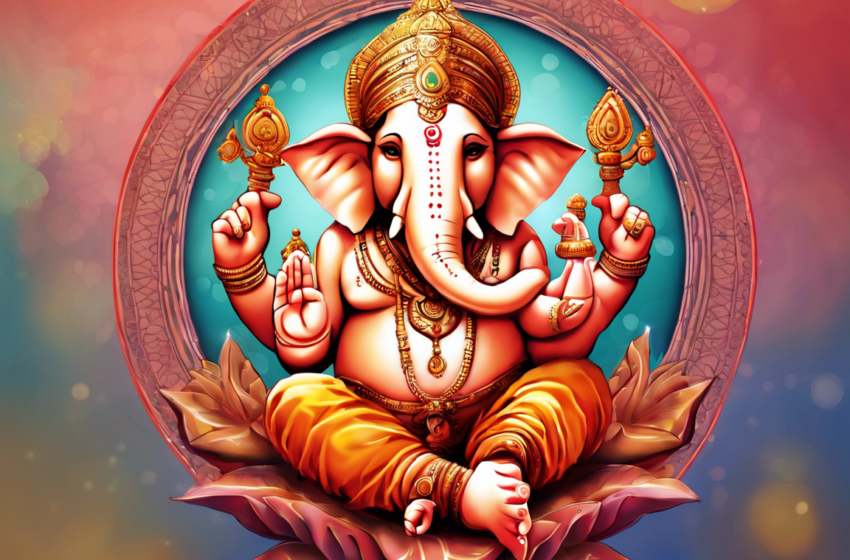Sankashti Chaturthi 2023: Dates and Significance

Sankashti Chaturthi 2023: Dates and Significance
Sankashti Chaturthi is a significant Hindu festival celebrated in honor of Lord Ganesha, the remover of obstacles. It falls on the fourth day of the waning phase of the moon (Krishna Paksha) in the Hindu calendar month. This auspicious day is observed by fasting, performing rituals, and offering prayers to Lord Ganesha to seek his blessings for prosperity, success, and the removal of obstacles.
Dates for Sankashti Chaturthi 2023:
In the year 2023, Sankashti Chaturthi will be observed on the following dates:
- January 24: Tuesday
- February 23: Thursday
- March 25: Saturday
- April 23: Sunday
- May 23: Tuesday
- June 21: Wednesday
- July 21: Friday
- August 19: Saturday
- September 18: Monday
- October 18: Wednesday
- November 16: Thursday
- December 16: Saturday
It is believed that observing Sankashti Chaturthi with devotion and sincerity can bring about positive changes in one’s life and help overcome various challenges.
Significance of Sankashti Chaturthi:
Sankashti Chaturthi holds immense significance in Hindu culture and is considered highly auspicious for Ganesha devotees. Here are some key aspects that highlight the importance of this festival:
-
Blessings of Lord Ganesha: Worshipping Lord Ganesha on Sankashti Chaturthi is believed to invoke his blessings for success, wisdom, and the removal of obstacles in one’s life.
-
Fasting and Prayers: Observing a fast on Sankashti Chaturthi and performing puja rituals is thought to bring prosperity and fulfillment of desires.
-
Community Celebrations: Sankashti Chaturthi is a time for community gatherings, where devotees come together to sing bhajans, recite hymns, and seek the blessings of Lord Ganesha.
-
Spiritual Significance: The significance of Sankashti Chaturthi lies in its spiritual undertones, emphasizing the importance of faith, devotion, and seeking divine intervention in times of need.
-
Symbol of Unity: This festival unites people from different backgrounds and communities in their devotion to Lord Ganesha, promoting harmony and togetherness.
Rituals and Celebrations:
On Sankashti Chaturthi, devotees wake up early, take a bath, and observe a strict fast throughout the day. They break their fast only after sighting the moon and offering prayers to Lord Ganesha in the evening. Some common rituals observed on Sankashti Chaturthi include:
- Morning Prayer: Devotees start the day with prayers and mantras dedicated to Lord Ganesha.
- Fasting: Many people fast from sunrise to moonrise, consuming only fruits, milk, and specific foods allowed during the fast.
- Puja: In the evening, a puja is performed with offerings of flowers, incense, and sweets made especially for Lord Ganesha.
- Moon Sighting: After the puja, devotees offer prayers to the moon and seek its blessings while breaking their fast.
Sankashti Chaturthi is a time of devotion, reflection, and seeking the divine grace of Lord Ganesha for protection and prosperity.
FAQs (Frequently Asked Questions)
Q1: Can anyone observe the fast and rituals of Sankashti Chaturthi?
A1: Yes, anyone can observe the fast and rituals of Sankashti Chaturthi, irrespective of age, gender, or background. It is a day dedicated to seeking the blessings of Lord Ganesha.
Q2: What should one avoid during the Sankashti Chaturthi fast?
A2: It is recommended to avoid consuming grains, onion, and garlic during the Sankashti Chaturthi fast. Fruits, milk, and specific fasting foods are allowed.
Q3: What is the significance of sighting the moon on Sankashti Chaturthi?
A3: Sighting the moon after the evening prayers symbolizes the completion of the fast and is considered auspicious for seeking blessings and fulfillment of desires.
Q4: Can one perform special prayers or rituals at home on Sankashti Chaturthi?
A4: Yes, special prayers and rituals dedicated to Lord Ganesha can be performed at home on Sankashti Chaturthi. Devotees can set up a small altar and conduct the puja with devotion.
Q5: Are there any specific mantras or chants for Sankashti Chaturthi?
A5: Yes, there are several mantras dedicated to Lord Ganesha that can be chanted on Sankashti Chaturthi, such as the Ganesh Chalisa, Ganesh Gayatri Mantra, and the Ganesha Maha Mantra.
Q6: What is the best time to break the fast on Sankashti Chaturthi?
A6: The fast should be broken after sighting the moon in the evening, preferably within a specific time window considered auspicious for ending the fast.
Q7: Can pregnant women or individuals with health conditions observe the Sankashti Chaturthi fast?
A7: Pregnant women and individuals with health conditions are advised to consult with a healthcare provider before observing the fast. They can also choose to perform modified versions of the rituals based on their health needs.
Q8: How long has Sankashti Chaturthi been celebrated in Hindu culture?
A8: Sankashti Chaturthi has been celebrated for centuries in Hindu culture as a day dedicated to seeking the blessings of Lord Ganesha and overcoming obstacles in life.
Q9: Are there any specific offerings that can be made to Lord Ganesha on Sankashti Chaturthi?
A9: Devotees can offer modaks, laddoos, durva grass, red flowers, and incense sticks as special offerings to Lord Ganesha on Sankashti Chaturthi.
Q10: How can one enhance the spiritual significance of Sankashti Chaturthi in their daily life?
A10: One can enhance the spiritual significance of Sankashti Chaturthi by practicing acts of kindness, compassion, and generosity, along with regular prayers and devotion to Lord Ganesha.
Sankashti Chaturthi is a sacred festival that holds deep spiritual meaning for Ganesha devotees, symbolizing faith, perseverance, and the triumph of good over evil. By observing the traditions and rituals associated with this auspicious day, devotees seek the blessings and protection of Lord Ganesha in their lives.